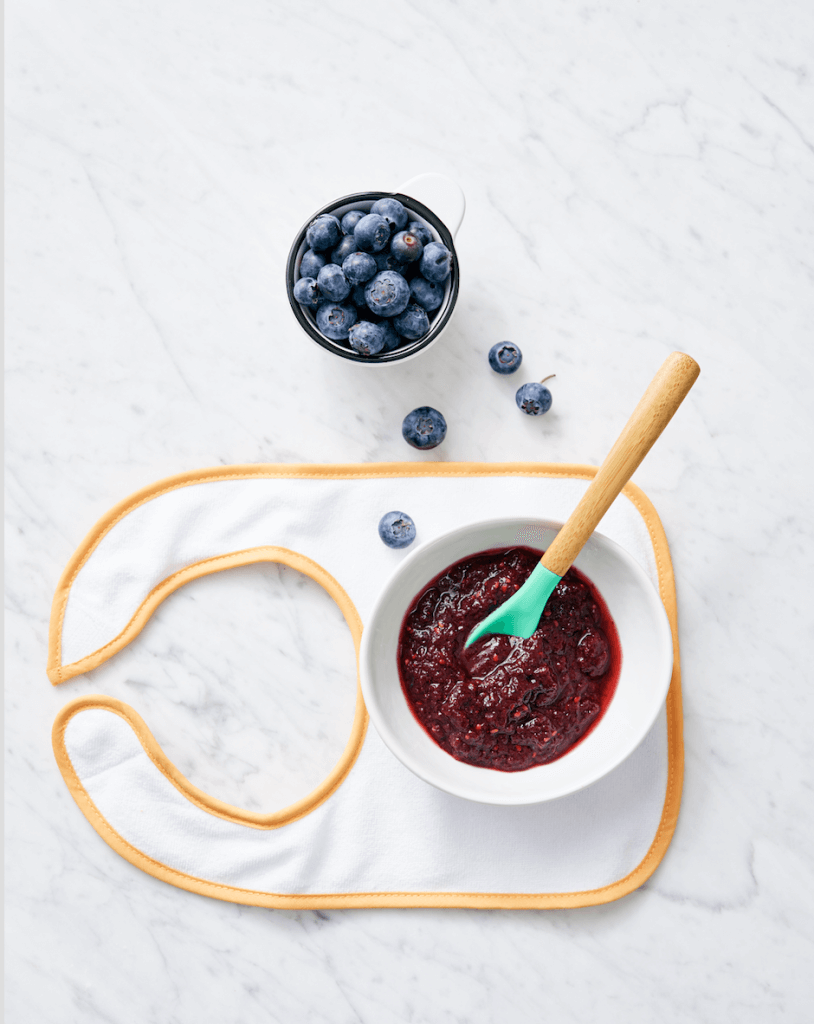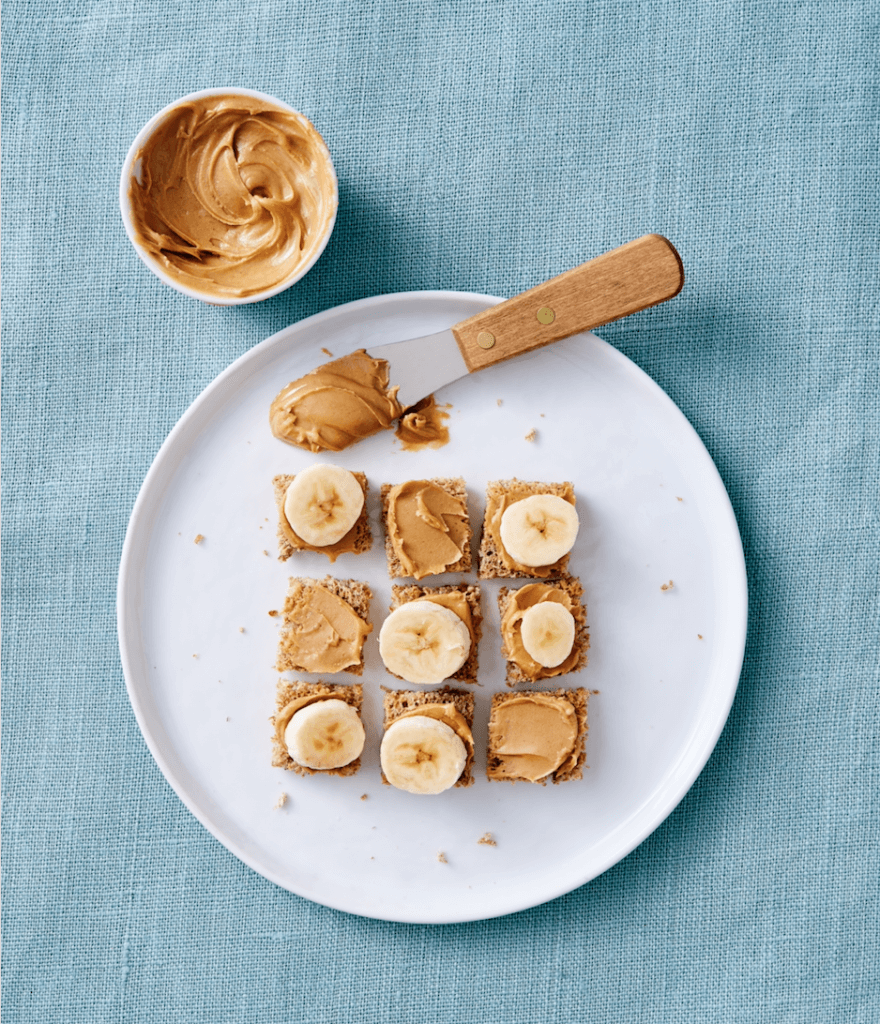Anjali Shah is a mom, wife, certified health coach, author, and founder of the Picky Eater Blog. In this article, Anjali provides helpful tips and tricks to help picky eaters embrace healthy plant-based foods, and make mealtime enjoyable for everyone.

Raising Healthy Kids Who Are Picky Eaters
I stumbled upon Anjali’s blog one afternoon while doing some research on fellow healthy food blogs to find recipes for my picky eater.
Her blog was full of colorful mouthwatering dishes. As I read further, curious about the person behind these delectable and simple recipes for families, I realized that we had even more in common.
She and I live in the same midwestern city! Not only that, we both share a passion for feeding our children healthy, whole plant-based meals without making ourselves go crazy in the process.

Anjali knows what’s she’s talking about when it comes to raising healthy happy kids that love their veggies. She is the best-selling author of two cookbooks The Super Easy Baby Food Cookbook, and Kid Chef Junior, a fan favorite in my house!
Her extensive knowledge of the ages and stages of child development coupled with her understanding of how children develop food preferences has helped moms from all over the world transform the eating habits of their picky eaters.
Her first-hand experience as a mom, as well as the in-depth research she has done, will help you encourage your child to embrace healthy food choices at any age.
You consider yourself to be a picky eater. How do you define a picky eater?
When you think about a picky eater, you usually think of a child who refuses to eat her vegetables. For me, being a picky eater is about being selective about what I put into my body, and what I feed my kids.
Being “picky” is all about choosing foods that are wholesome and better for your health, and limiting processed food and sugar – which are generally more harmful to our health in the long term.
I’m reclaiming the term “picky eater” to be one that’s more positive and focused on being picky in a way that’s good for your health!
What experiences did you have as a child that shaped your health and eating habits as an adult?
I was fortunate enough to grow up in a health-conscious family. Both my mother and father focused on healthy eating habits.
We had lots of fruits, veggies, and home-cooked meals. There was very little sugar in the house. I remember my father not allowing us to eat Quaker granola bars when he found out they contained trans-fats.
That was long before trans-fats were commonly known to be bad for your health! They were really ahead of their time.
So until I went to college, eating healthy was just a way of life. I didn’t think too much about it until, after overindulging in junk food as a college student and feeling awful as a result.
I realized that food can have a major impact on our health and well-being! And after my first year of college, I immediately went back to eating the way I had been taught as a child, and felt so much better as a result!
You have two kids, ages 17 months and 5 years. How did you instill a love for healthy foods from the start with them?
I started feeding my children vegetables for their very first foods!
At 6 months old, instead of going straight from breastmilk/formula to baby cereal, I started with mild pureed vegetables such as avocado, carrots, sweet potatoes, and green beans.
Then I introduced more vegetables that were still mild but more distinct in flavor such as broccoli, cauliflower, and spinach. After I introduced all the vegetables then I began cereal.
But I did not start with the typical baby cereal. Instead, I went straight to regular oatmeal, which I would grind down to a fine consistency.
After I introduced cereal I started beans, lentils, and any other vegetables I hadn’t done before.
Finally, I introduced fruits last. I made as much food as I could at home. From ages 6 months to 2 years I tried to really stick to a strict diet that had very minimal processed foods, zero added sugar, and focused primarily around vegetables, fruits, whole grains/sprouted grains, and lean protein (Greek yogurt, lentils/beans, cheese, eggs, etc.)

What do you suggest a parent do if they have a child between the ages of 2-6 who is a picky eater?
When it comes to children ages 6 months to 2 years keeping a strict diet is important to reduce pushback at a later age. However, if you’ve passed that mark, then I suggest parents use two techniques in conjunction: 1) exposure and 2) “alternating foods” with their children from age 2-6.
From an exposure standpoint, it’s all about increasing the exposure of the things you want them to eat first when they are the hungriest.
Let’s say you want your child to eat broccoli. When it’s time for their meal, give them broccoli first and encourage them to try it. If they refuse, ask them what they’d like to “alternate” with (within reason, of course – it has to be food not candy).
If they ask for a sandwich – tell them they have to take a bite of the food you want them to eat first, then they get a bite of their desired food. Then alternate bite for a bite back and forth.
I also encourage parents to have conversations with their kids at this age around inclusion and trying. Some general messages that apply to more than just eating are: “we always include,” and “we always try.”
For example, we talk about how just like it’s important to include all your friends when you’re playing, it’s also important to include all your food groups on your plate. I use the phrase, “We always include…on our plate,” or “our veggies are feeling left out!”
I also talk to my kids about persistence. I use the phrase, “We always try…” I relate this back to how we are persistent and always try to do our best at school, we always try to be kind to our friends, we also always try new foods.
Talking to your kids about why we eat vegetables, fruits, and other healthy foods to help our bodies, and feel good, emphasizing how food can help us feel our best or can cause us to feel sick, is also important.
Kids are smart, and as they get to the 4-6-year-old range they have a better understanding of why we need healthy foods in our bodies, and why we need to limit other foods.
What about kids who don’t like different textures or tastes?
If you have a picky eater that doesn’t like certain textures, I suggest experimentation. You may not know if they don’t like a particular food because of the taste or the texture.
My youngest, Ayan, didn’t like eating vegetables in cut-up pieces, but he had no problem eating them pureed. If your child doesn’t like a vegetable, try giving it to them in a different texture, and see if that works.
Experiment with whole veggies vs. raw vs. puree. It’s trial and error. Set a precedent and be persistent. At this age don’t give your kids too many options – you’re not a short-order cook!
As kids get older, 7-10, how do you suggest parents encourage picky eaters to develop health habits?
When kids get older I tell parents to get them involved in the kitchen. Take them to the grocery store, pick out recipes, get them involved and interested in how food is prepared.
If you haven’t done so already, talk to them about why it’s important to fuel their body with healthy food.
I know parents who have children in the teens and pre-teens who want to survive on bagels, pasta, and pizza. What suggestions do you have for them?
When kids are 10 and older it becomes more about exploring their feelings around food. How do those foods make them feel? How do they think, you, the parent feels, when you’ve cooked a healthy meal they refuse to eat?
Teach them the long-term effects of their choices on their bodies. Just like we teach kids about the effects of smoking, or doing drugs, teach your children the long-term effects of eating highly processed food high in sugar.
They also need to have some freedom, so allow them to make choices. For example, they get to choose what they eat for breakfast and lunch, and you get to choose what they eat for dinner, but then give them the option to get involved in the dinner choice with you.
Give them some of the responsibility by letting them cook for you or with you. Model healthy eating behaviors, and don’t provide another option at dinner.
What are your goto meals for your kids?
Breakfast for Ayan (17 months)-Plain oatmeal with plain whole milk yogurt and mashed banana, sugar-free organic o’s cereal, apple (or other fruit).
Breakfast Layla (5 yrs)-sugar-free organic o’s cereal or bran cereal, half a banana sliced with a side of nut butter, strawberries, or other fruit.
Lunch for Ayan (17 months)-steamed broccoli, squash, cauliflower, and lentils puree, with a slice of sprouted wheat bread with nut butter (no jelly).
Lunch Layla (5 yrs)-cheese and avocado on sprouted bread (or a nut butter sandwich like her brother), a mix of steamed vegetables with olive oil and salt, and a side of fruit. Organic string cheese or mild cheddar cheese for an afternoon snack.
Dinner for both kids-whatever we’re all having for dinner and we all eat the same thing. That might include a soup or stew, Indian food, or one of the recipes from The Picky Eater!

What do you do if your kids think the “adult” dinner is too spicy or they don’t like it?
If it’s too spicy, I add yogurt or put some of the dinners to the side before adding more spice. If they’re not feeling it at all, which happens, then I try the alternating technique first.
I’ll ask them, “what will make this easier for you to eat?” They’ll usually ask for apple slices, yogurt, and I’ll allow whatever they want that is within reason.
And sometimes I’ll whip up a quick cheese quesadilla (on a sprouted wheat tortilla), served with steamed veggies on the side if they really don’t like what we’re having.
What are your go to time-saving tips when it comes to preparing healthy meals for you and your family?
An easy weeknight meal for our family is lentil or chickpea pasta with organic jarred marinara sauce. Then I’ll add a box of baby spinach, and throw it into the sauce. You’ve got a complete healthy whole meal in the time it would take you to make boxed macaroni and cheese.
You can turn a grilled cheese sandwich into a healthier option by using sprouted wheat bread, a quality cheese, and serving it with steamed vegetables on the side.
What do you do when you take your daughter to a birthday party and you know there is going to be highly processed foods?
Before I take my daughter to a birthday party, I feed her at home. That way when she gets to the party she won’t be extremely hungry.
When the pizza comes around she still gets a piece like all the other kids, but because she’s already eaten she only has one piece.
When it’s time for cake, I try to cut it into a smaller portion for her. She gets to be part of the party and enjoy the food with the rest of the kids, but I know she’s not overdoing it.
What advice do you have for mamas who feel overwhelmed when it comes to feeding their family healthy whole meals?
Start small and establish a foundation of healthy fruits and vegetables. Emphasize portion control and eating in moderation, and start a conversation about “your human body” and how it works. Have your kids use their reasoning skills when it comes to eating healthy foods, and keep the conversation going.
Putting it All Together: Healthy Happy Kids
As Anjali mentioned it’s all about starting as early as possible when it comes to developing healthy habits. When you encourage eating vegetables at a young age, your child is most likely going to enjoy them too. Transitioning your family to a plant-based lifestyle is one way to increase your intake of healthy whole foods.
It’s also important to set a good example. Our kids are always watching us. When our plates are full of healthy whole foods, they’ll want to eat them too.
My youngest is always stealing food off my plate, and since I have a primarily plant-based diet it’s full of lots of green veggies!
As kids get older the key to developing healthy habits is education and involvement. Getting them involved in the kitchen, and giving them the freedom to choose a healthy meal.
You can get Anjali’s cookbooks Kid Chef Junior and Super Easy Baby Food on Amazon! The beautiful photographs of each recipe will get your kids excited to get creative in the kitchen and try new and delicious recipes!
Check out these other helpful and informative articles to help picky eaters embrace a plant-based lifestyle…
- 5 Tips for Raising Plant-Based Kids in a Mixed Diet Family
- WFPB Diet: The Ultimate Guide to Starting a Whole Food Plant-Based Diet
- Vegan Grocery List with Printable List
- Top 10 Vegan Kitchen Tools
- Top 10 Plant-Based Diet Books
- Plant-Based Snacks You Can Buy at the Store
- Top 10 Best Vegan Gift Baskets
Follow me on Facebook, Instagram, and Pinterest for plant-based family recipes your whole family will enjoy, and tips and tricks for encouraging your family to embrace a whole food plant-based lifestyle.
What challenges do you experience with your kids when it comes to eating healthy whole foods? Comment below. I’m here to help!



James
Thank you! At least I know I am not alone! My kids are both picky eaters in their own ways and honestly, it droves me crazy come dinner time. Like I am sick of constantly dealing with one or both about why they don’t like the meal and can’t eat it. I read another great read that is worth looking into, https://www.ez.insure/landing/2021/03/the-survivors-guide-to-picky-eaters/ , and I would love to hear your thoughts on the article as well.